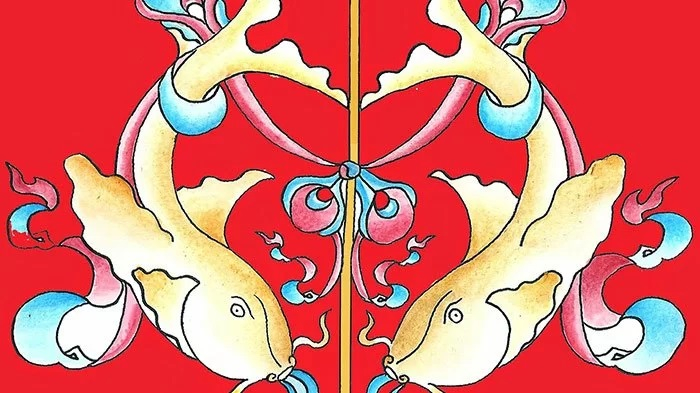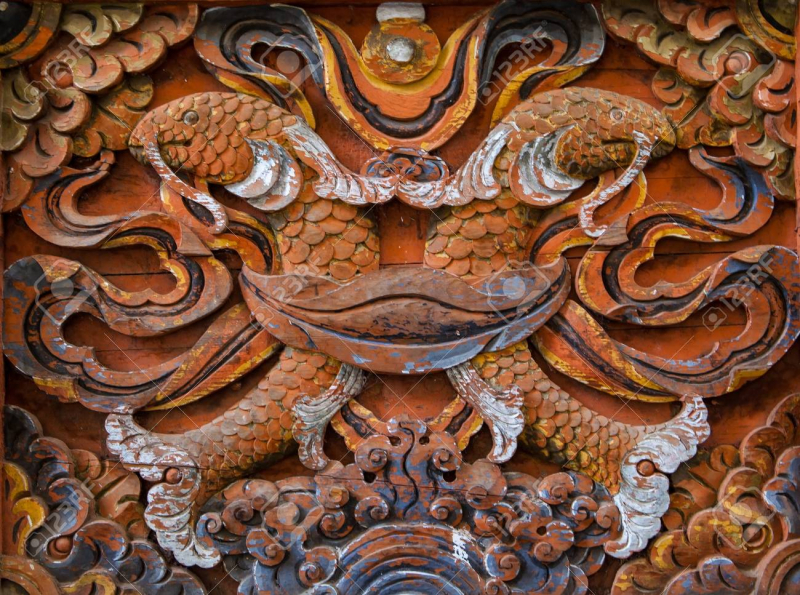Golden Fish (Matsyayugma)

In Buddhism, the symbol of the Golden Fish holds special significance, representing good fortune, abundance, and freedom. These fish are often depicted in pairs, facing each other and sometimes with intertwined tails, swimming gracefully through the waters.
These fish symbolize fertility and the endless cycle of life, as the fish are known for their prolific naturally, producing many offspring. Their pairing suggests harmony and conjugal bliss, reflecting the ideal relationship between a couple in Buddhist teachings. Additionally, the Golden Fish represent fearlessness and courage. Just as fish fearlessly navigate through water, Buddhists aim to move through the "ocean of suffering" without fear, guided by the teachings of the Buddha.
Moreover, the fish symbolize freedom from the constraints of the material world. Fish glide effortlessly in water, analogous to individuals striving to attain spiritual liberation from worldly attachments and desires.
In Tibetan Buddhism, the Golden Fish are one of the Eight Auspicious Symbols, signifying abundance, fertility, and happiness. They are often depicted alongside other auspicious symbols, such as the Wheel of Dharma and the Precious Parasol, in religious art and decorations.
The pairing of Golden Fish can also represent duality, such as the balance between opposing forces or the harmony between wisdom and compassion—two essential aspects of the Buddhist path.
















